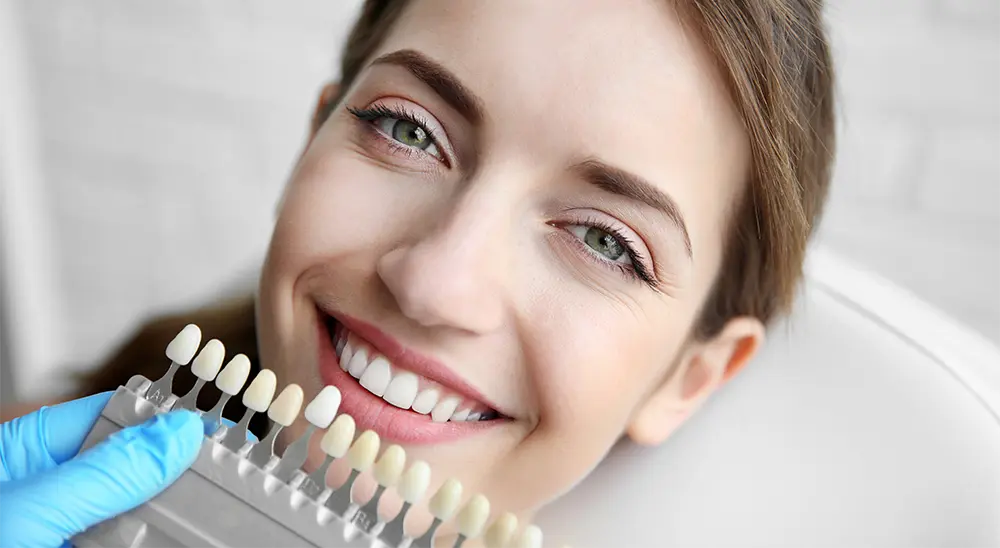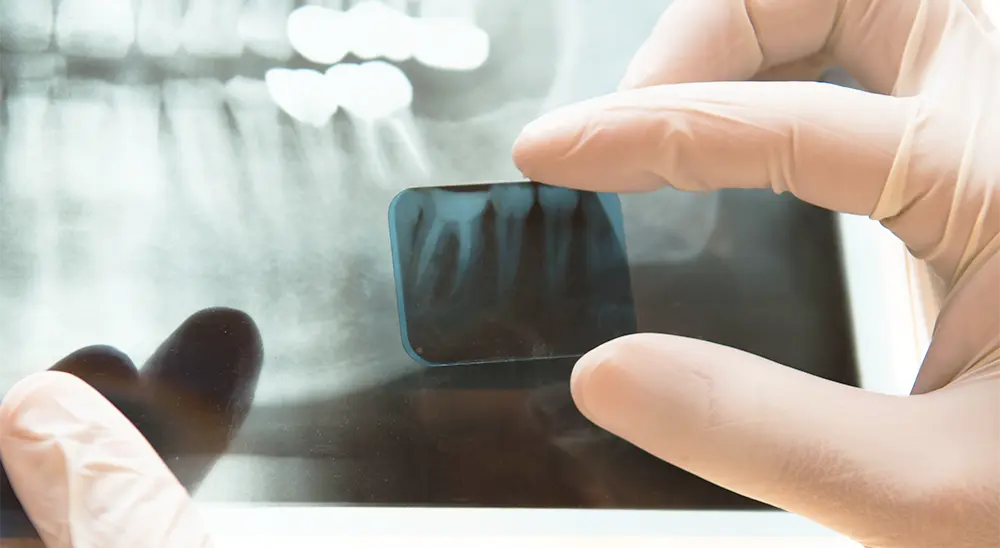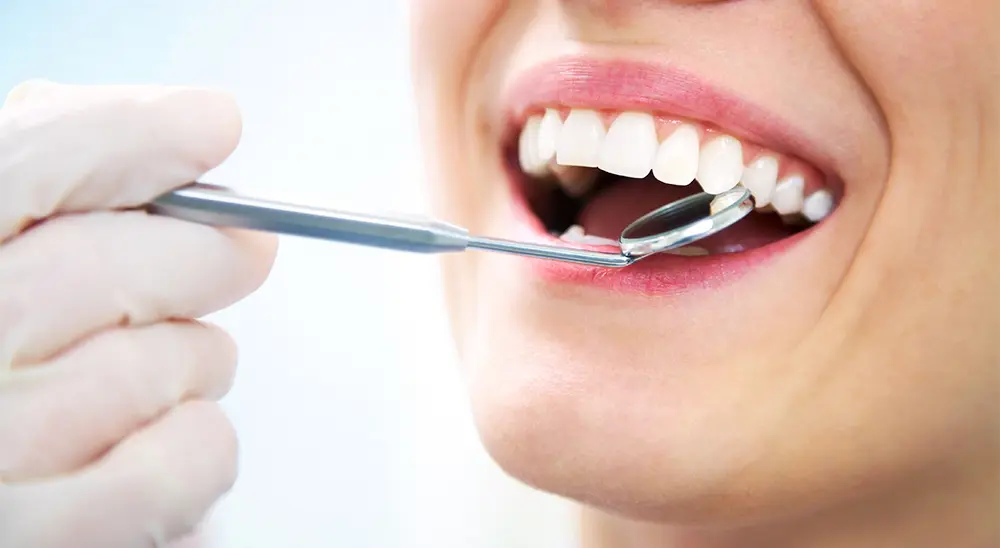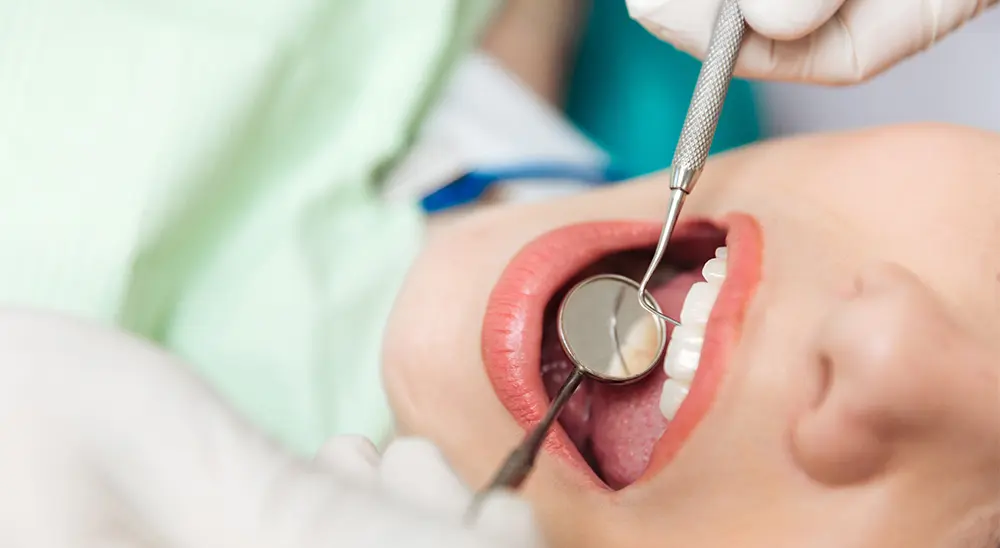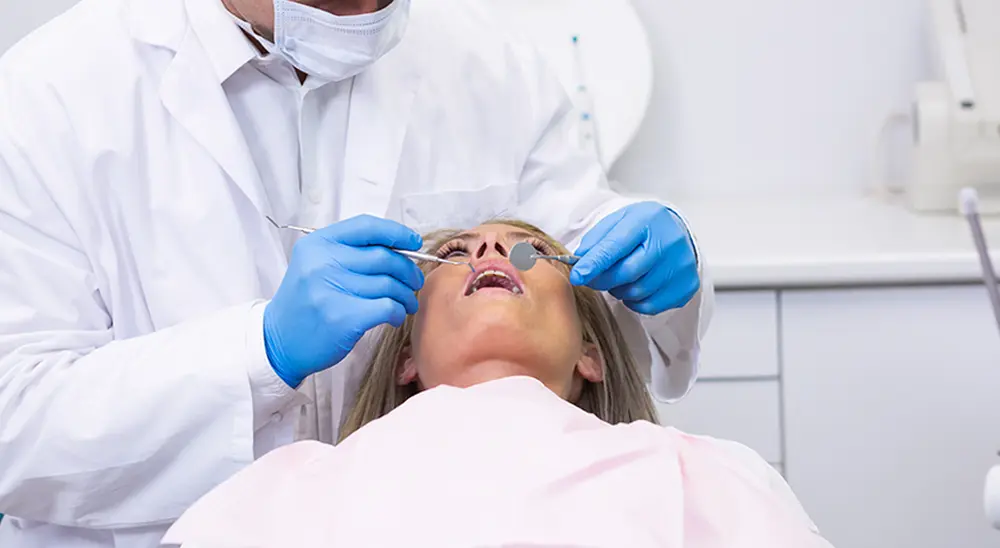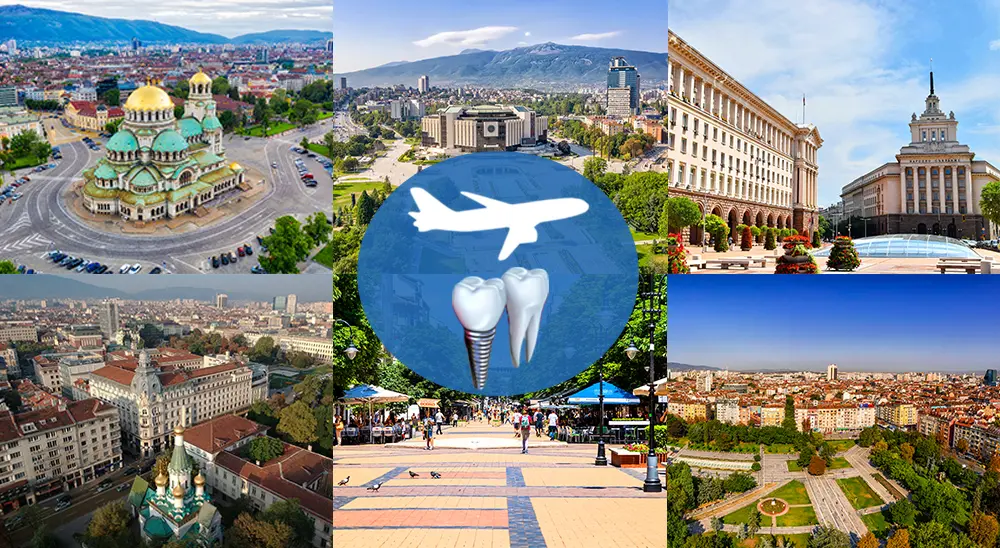
Dental Implantological treatment in Sofia (2nd part)
Everything about dental tourism in Bulgaria
In the first part of this article, we explained what dental tourism means, why you should choose Bulgaria, and why you should trust the Bulgarian medics and the reason to complete your treatment in Dental Clinic NuriDent, we also touched upon the prices that range for flight tickets and hotels in Sofia. In the second part, you will learn, what kind of sights you can find in Sofia and the hotels we recommend that you stay in.
Best hotels with proximity to Dental Clinic NuriDent?
1- Best Western Lozenetz Hotel
3 stars (Clinic NuriDent uses preferential prices)
For more information click here:http://www.lozenetzhotel.com/en/

2- Hemus Hotel
3 stars (Clinic NuriDent uses preferential prices)
For more information click here: https://www.hemushotels.com/en/home-en/home-en.htm

3- Maison Sofia Hotel
4 stars
For more information click here: https://maisonsofia.com/

4- Olive’s hotel
4 stars
For more information click here: http://olives-city-hotel.cityhotelssofia.com/en/

5- Marinela Hotel
4 stars
For more information click here: https://www.hotel-marinela.com/

6- Hill Hotel
4 stars
For more information click here:https://www.hillhotel-sofia.com/

If these options do not satisfy your expectation, you can always choose a place of your choice through www.booking.com, , www.airbnb.com and other applications.
The sights you can visit in city Sofia?
1- National Palace of Culture (NDK)

NDK has been built to resemble a place for, a special center for conferences, congresses, exhibitions, and concerts. In the year 2005 NDK was chosen as the best congress center in the world and 30 years it is part of The International Association of Congress Palaces, and NDK being the biggest in Southeast Europe (with a total area of 123 000 sq.m)
2- ‘Alexander Nevsky’ Cathedaral

Cathedral ‘Saint Alexander Nevsky’ is the biggest orthodox church in the country, with the area of 3170km.m. Built-in the center of the capital of Bulgaria- Sofia, it resembles a symbol of the liberation of Bulgaria from the centuries of the old Ottoman rule.
The Cathedral is completed during the year of 1912, as the main dome is 45 meters high. In painting, furnishing and interior, a lot of Bulgarian, Russian and German masters and painters took part during its creation. The bell tower of the cathedral is 53m high.
3- The national museum ‘Earth and People’
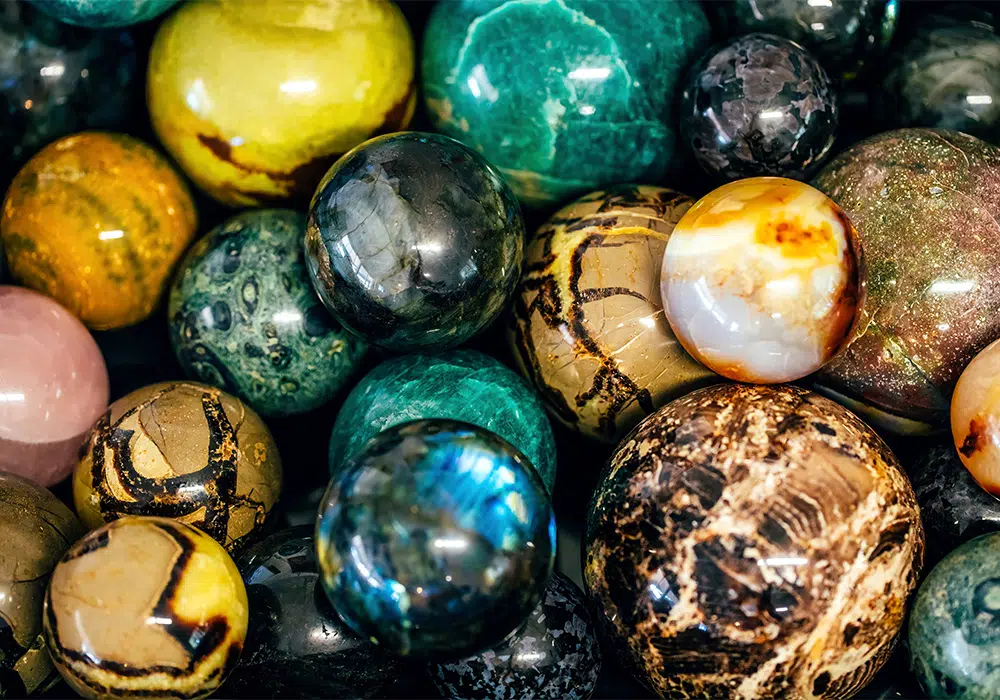
The national museum ‘Snake and people’ is one of the biggest museums for mineralogy in the world, with an area of 4000km.m
The museum has impressive exposures such as ‘Gigantic crystals’, ‘Minerals of the earth’, which represented the diversity of the planet and includes both very rare and common minerals. The museum also houses the impressive exposures of ‘Precious stones’, which contains beautiful and rare stones, additionally the museum presents ‘Minerals of Bulgaria’, which are special exposures of 250 different types of minerals.
4- Boyana Church
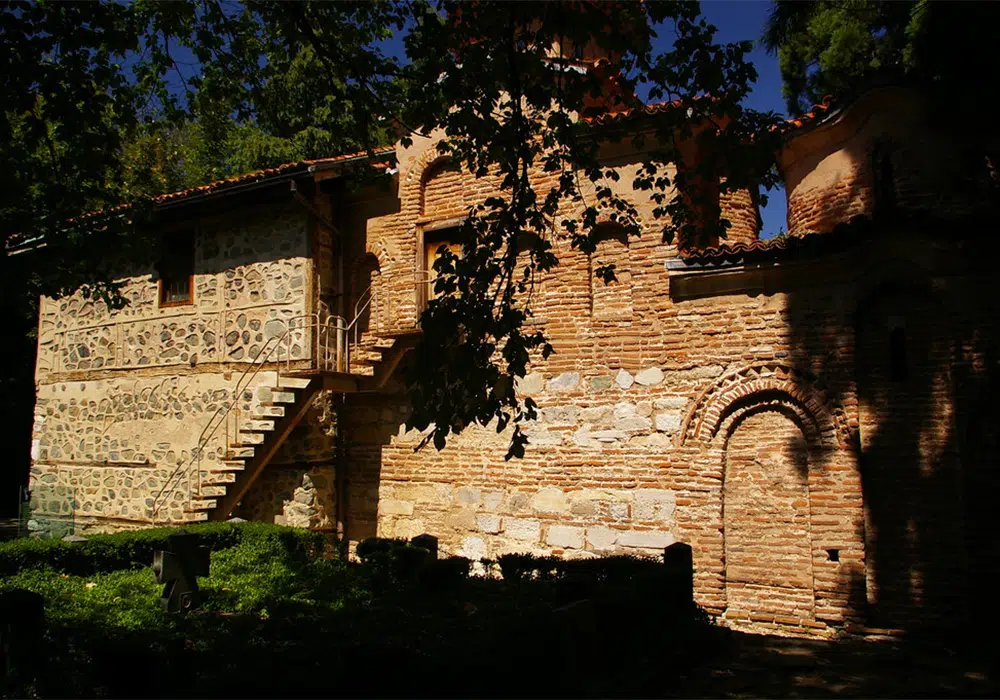
The Boyana Church is a remarkable monument of the Bulgarian and the Eastern European art and is included in the UNESCO World Heritage List. The walls of the church are completely painted with unique murals of more than 240 images, and their integrity is preserved to this day. Some of the last frescoes in the Boyana Church were made around the year of 1882 and depict her cartridge- Saint Nicholas and Saint Panteleimon.
5- National theater ‘Ivan Vazov’
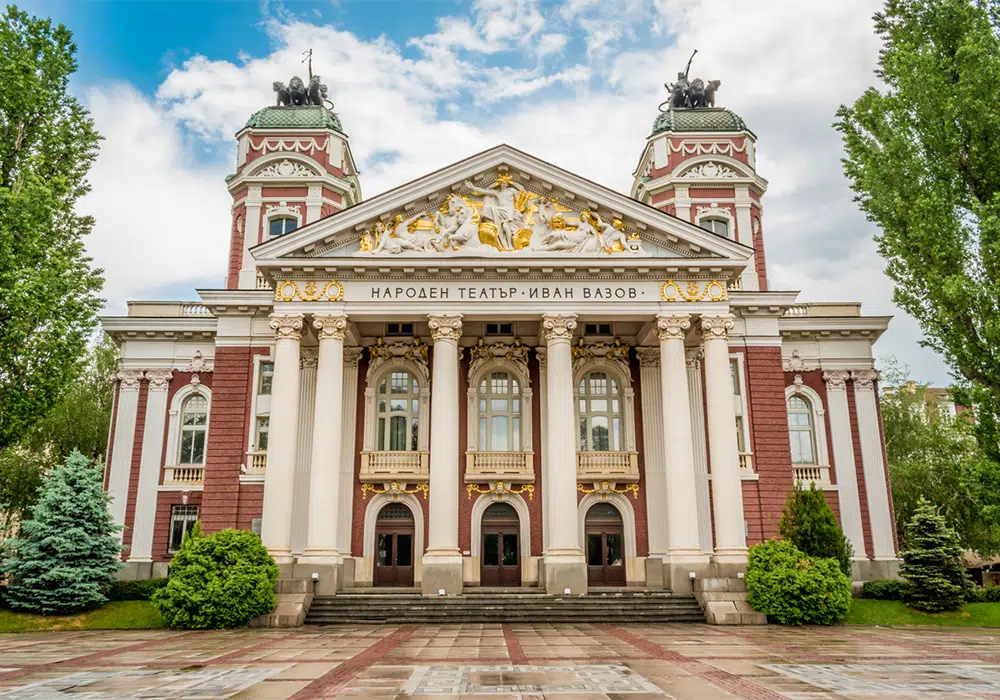
National theatre ‘Ivan Vazov’ is the first theatrical stage and overall the first theatrical institute in Bulgaria. Built-in the period between the year1924-1928, even then the theatre had special mechanisms, which only the most prestigious theatres in the world had built-in. The repertoire of the theatre includes both the most prominent representatives of the classics and contemporary world and Bulgarian drama.
6- Church ‘St. Sofia’
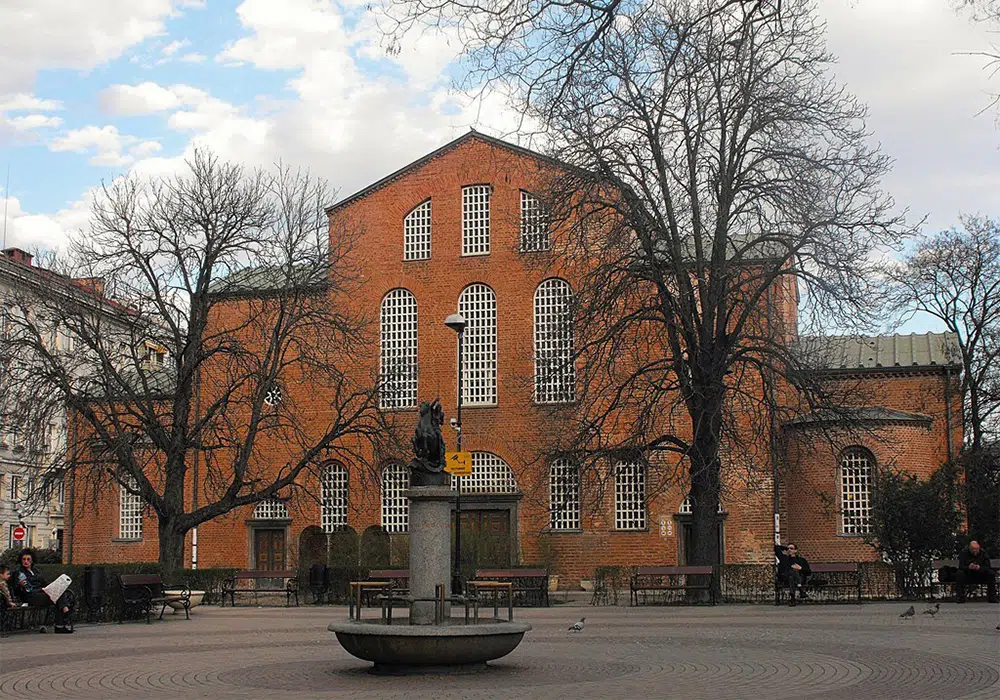
Many think, that the name of the capitol in Bulgaria- Sofia is connected to the martyr Sofia, whose memory in Bulgaria is honoured on September 17, this date is also an official holiday of Sofia. The truth, however, is different, city Sofia carries the name of the cathedral ‘St. Sofia’, and the cathedral carries the name of God’s Wisdom. The church is built during the 6th century and originally it was a cemetery temple, but today it is one of the oldest and most important sites in Sofia.
7- Yellow paves
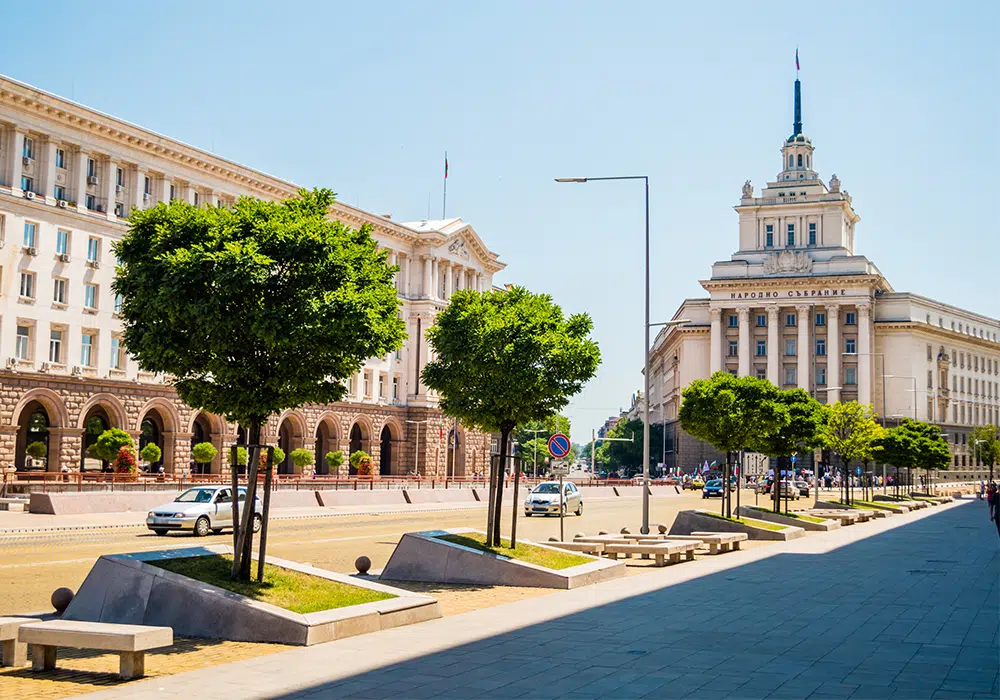
The yellow paves cover around 60 000km.sq. of Sofia center.
Most important buildings for our capital are located in the central parts of Sofia center- the National Assembly, the Council of Ministers, the Former Royal Palace, the National Theater Ivan Vazov, which we have already told you about, and a number of another state, cultural and public institutions.
8- Bulavard Vitosha, known by the name ‘Vitoshka’
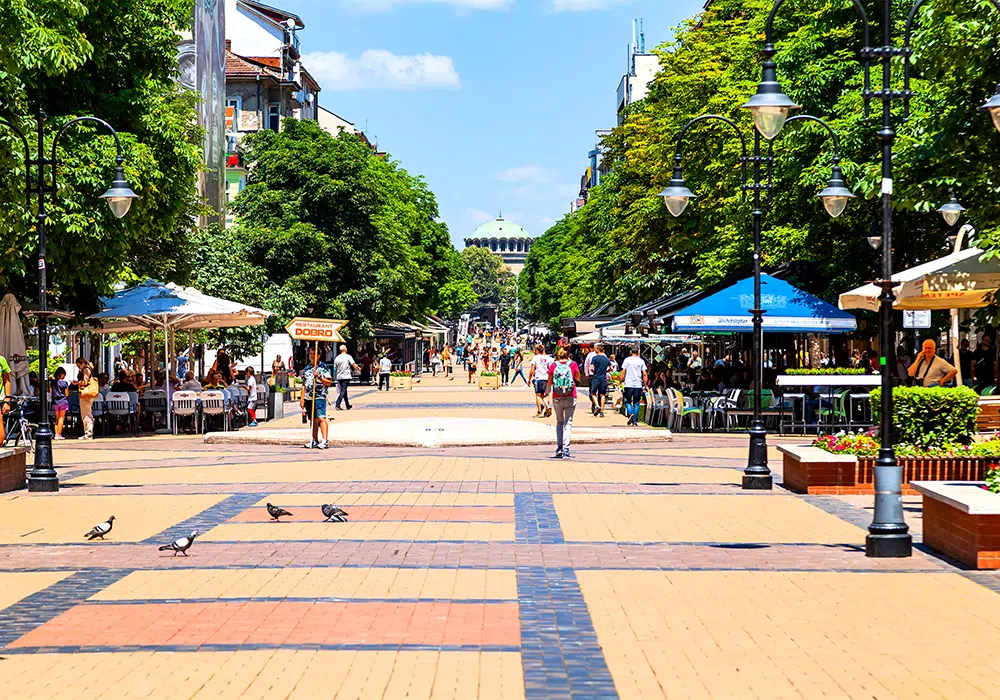
‘Vitoshka’ is one of the largest pedestrians walks in city Sofia, around it you can find several cultural monuments. You can walk on ‘Vitoshka’ without the worry of car traffic or cyclists getting in your way. You can dine out, with the many choices of restaurant around ‘Vitoshka’, and you can also enjoy and explore the wide variety of clothing, cosmetics, and jewellery shops.
9- Church ‘St. Nedelya’
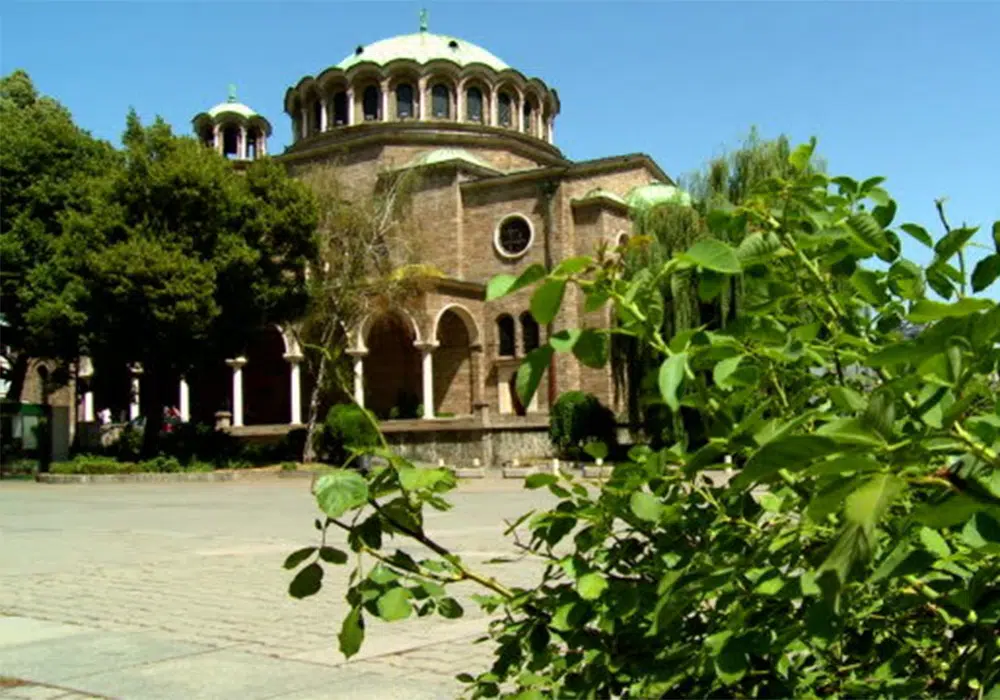
Church ‘Holy Sunday’ is built during the Middle Ages on top of the remains of an ancient Roman city ‘Serdika’. It is thought that the orthodox cathedral is built back in the 10th century, and its architectural style is reminiscent of Byzantine construction.
The dome of the temple ‘Holy Sunday’ is high 31 meters, and beneath it there are 11 bells. All the walls of the temple are painted. The church has two-row gilded iconostasis, and in the altar, there are three thrones.
10- Bath Bashi Mosque
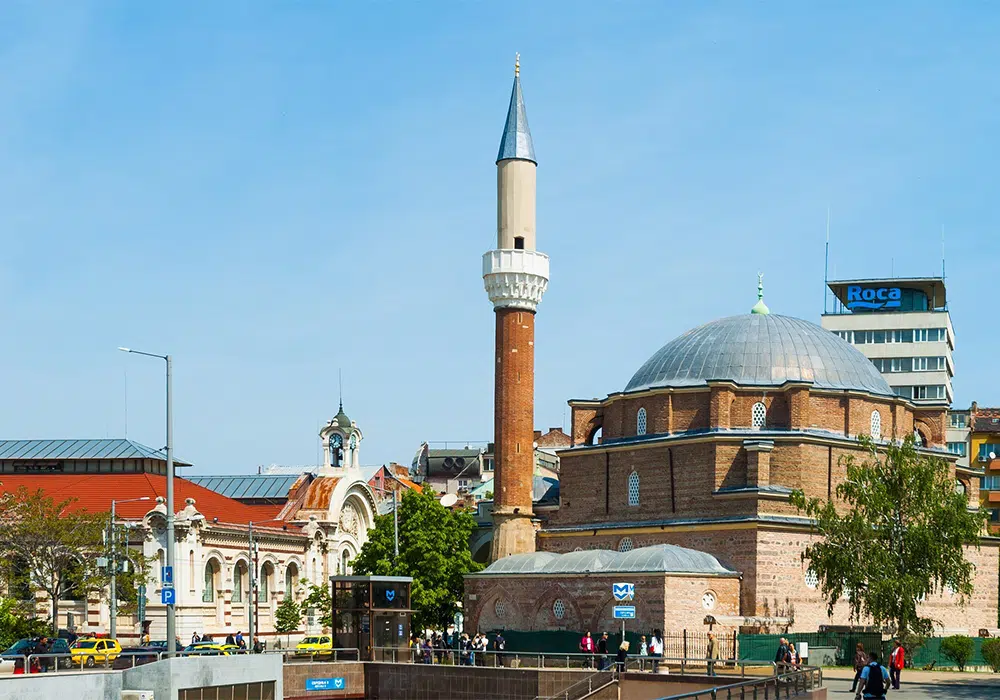
It is believed that Bath Bashi Mosque is built during the year 974 in the Islamic calendar, because of the figure depicted on the arch above the door. Its builder is believed to be the great architect Kodja Mamar Sinan Janissary, who is known to have built over 81 mosques, including the famous Selimiye Mosque in Edrine. The mosque was part of a larger bathing complex, and from there it inherited its name.
The minaret of the mosque is an exquisite architectural work, and according to Evliya Chelebi (Ottoman traveller, travel writer, poet and historian), it was unparalleled in beauty.
11-National Art Gallery
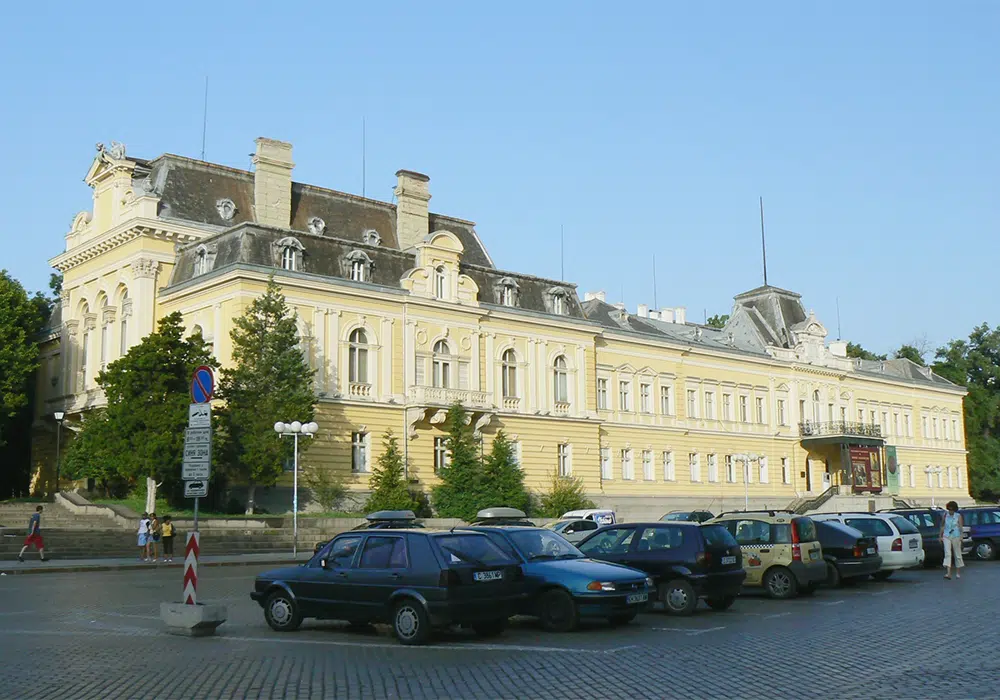
In the National Art Gallery, you can enjoy the art pieces of the biggest Bulgarian artists. The building in which the gallery is located was the former royal court. The building was designed and built-in 1879 by the Viennese architect Rupelmeier.


